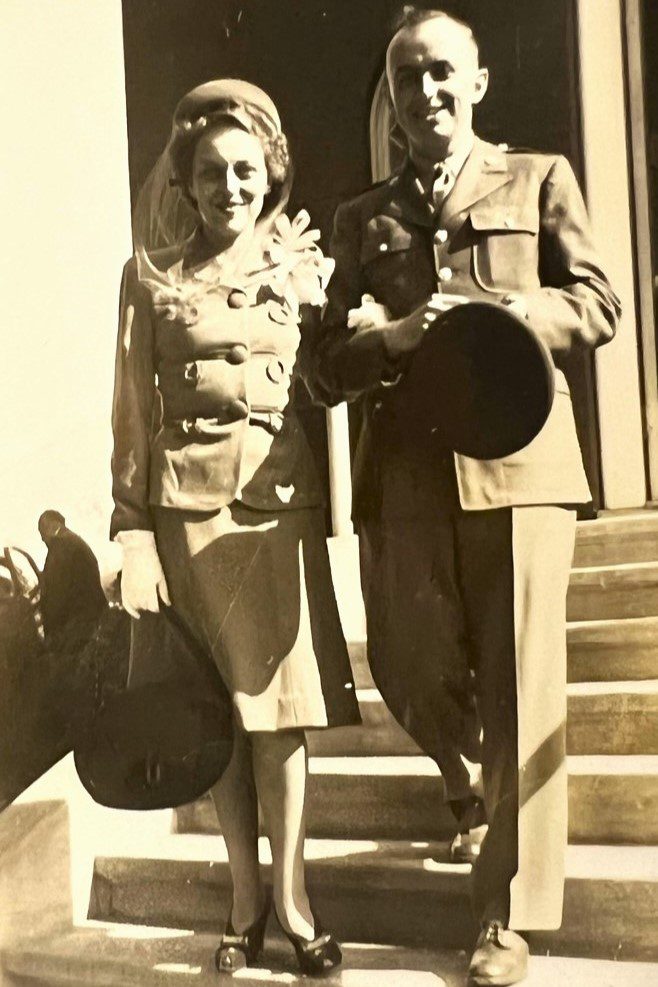
Ready-to-Wear Clothing
At the beginning of the 19th century, clothes were custom-made for the individual either at home or by tailors and seamstresses. By the 20th century, mass-produced, ready-to-wear garments with standardized sizing had replaced made-to-measure clothes for most consumers. Manufacturers embraced the changing role of labor and technological innovation to produce textiles that were cheaper and offered consumers more choices. Hand-sewn production at home disappeared in most households. Price, an expanding consumer base, and product choices were the foundations of demand.
In the 20th century, style and design became increasingly important to consumers purchasing clothes, not because they needed them but because they wanted them. With a ready supply of finished clothes to sell, merchants invented new ways to reach consumers. Department stores like Marshall Field’s and Macy’s, with display windows and showcases of new fashions, emerged and prospered. Likewise, retailers Montgomery Ward and Sears published catalogs to reach rural consumers with the newest styles of ready-to-wear clothing, including those for women and children.
Department Stores in Frederick County
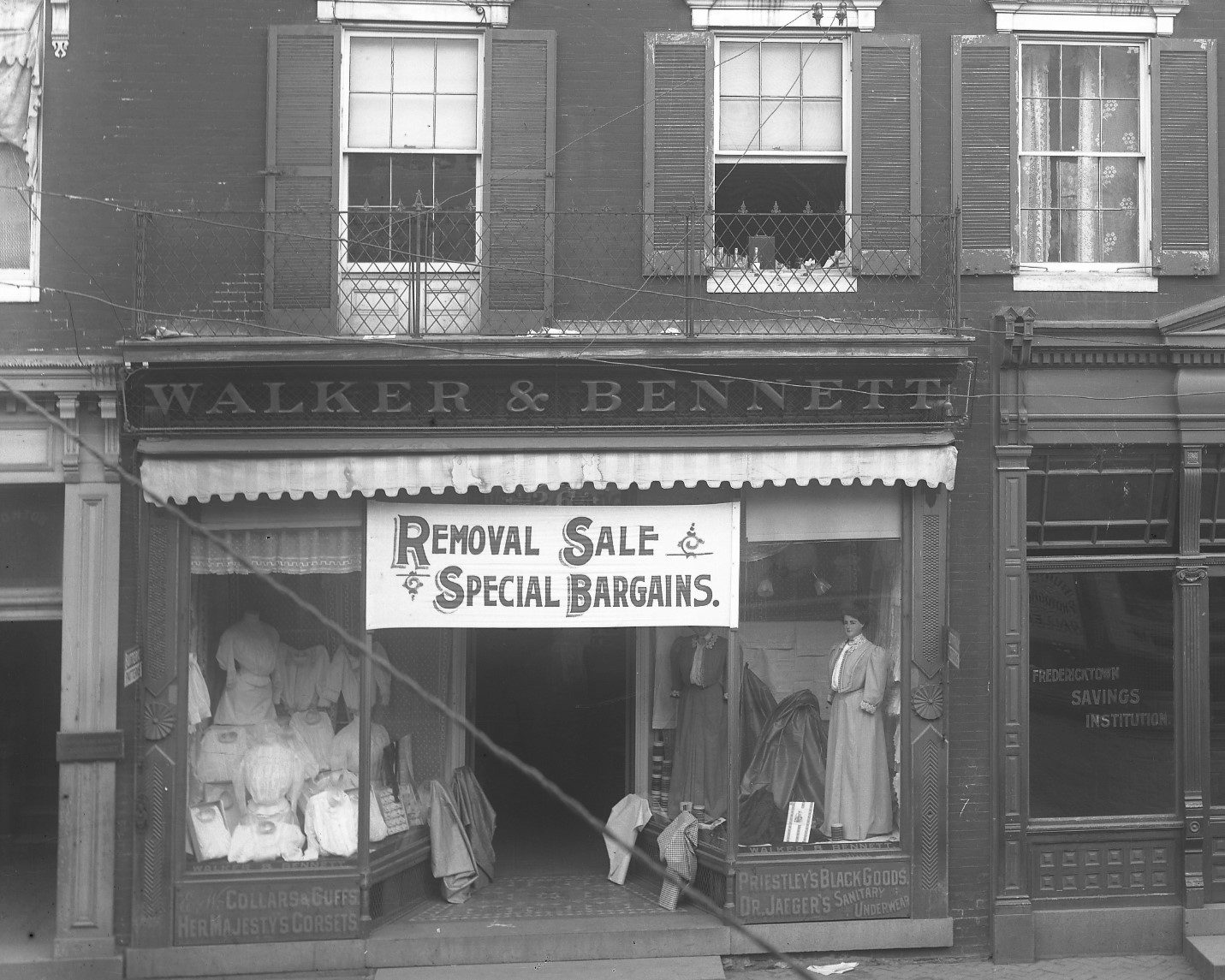
Walker and Bennett Department Store, Frederick
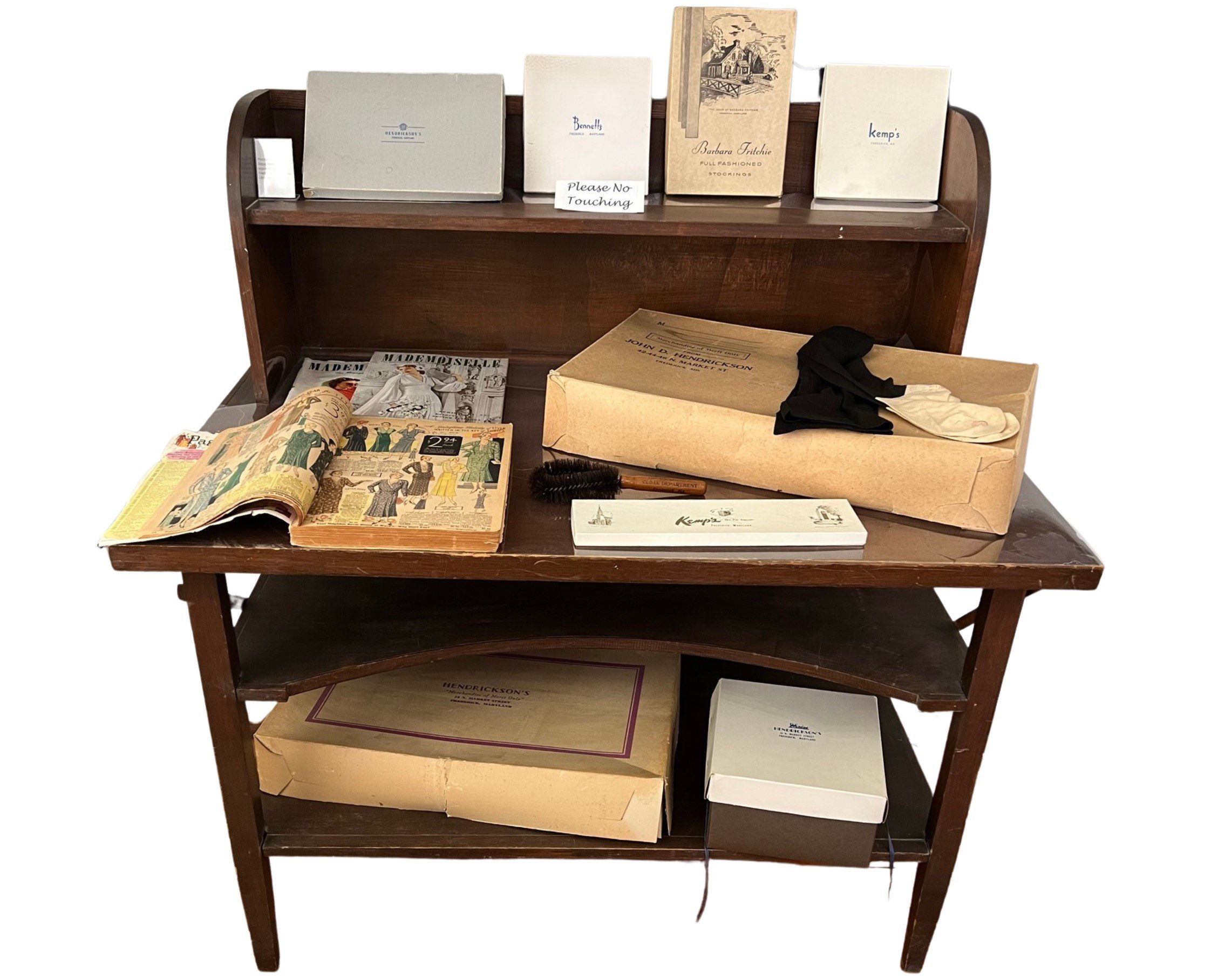
Shop table from Walker and Bennett with items from other Frederick department stores
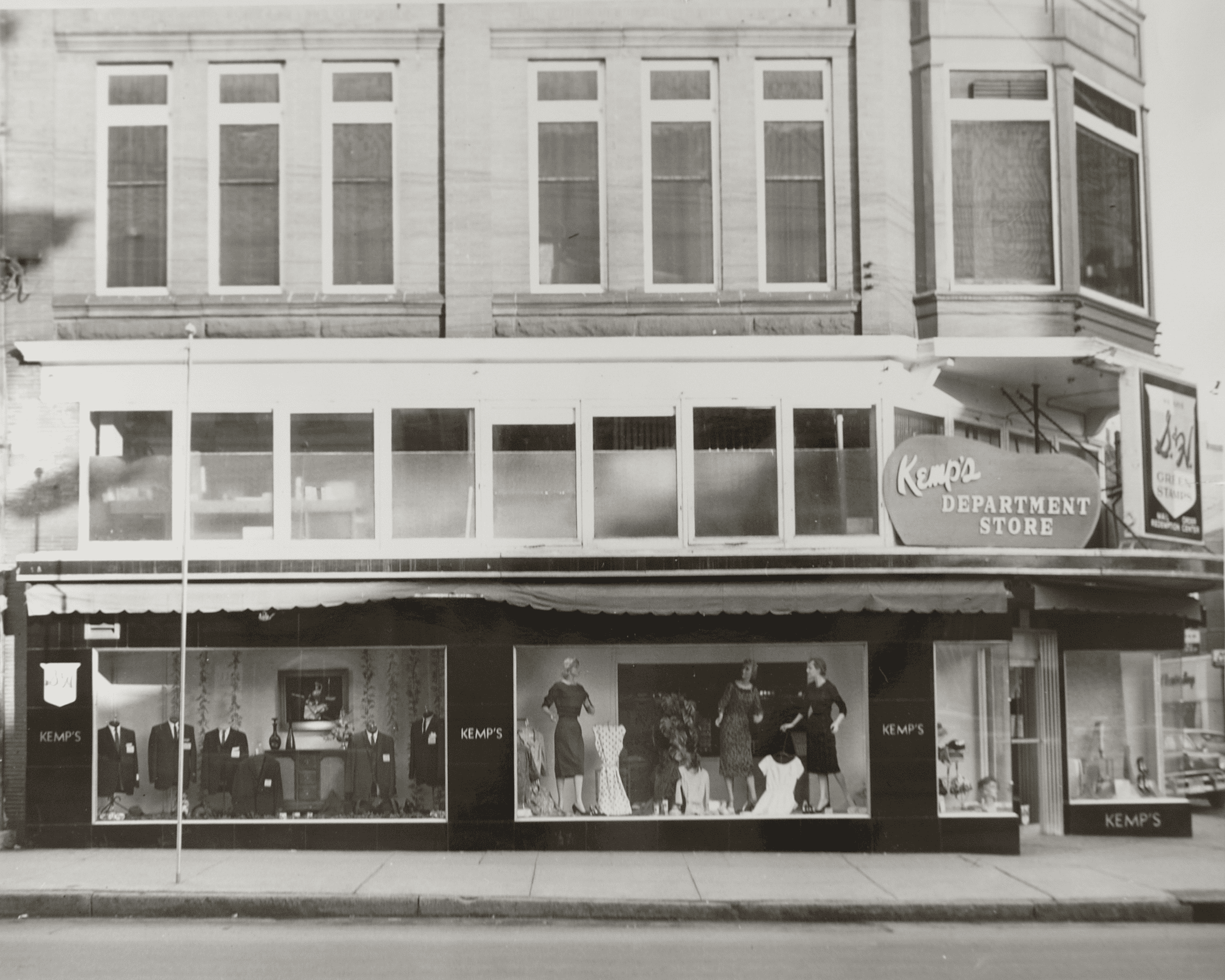
C. Thomas Kemp Department Store, Frederick
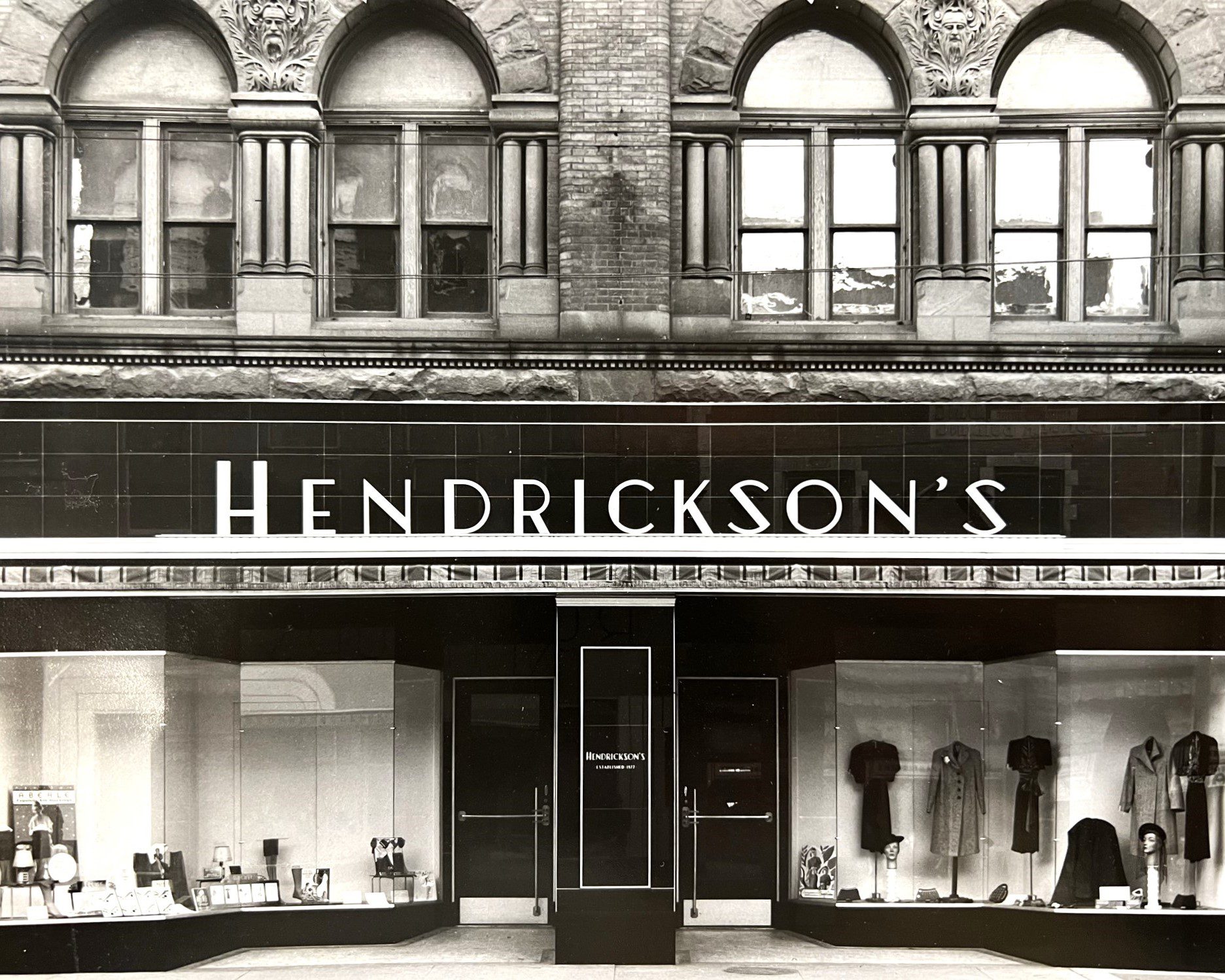
Hendrickson’s Department Store, Frederick
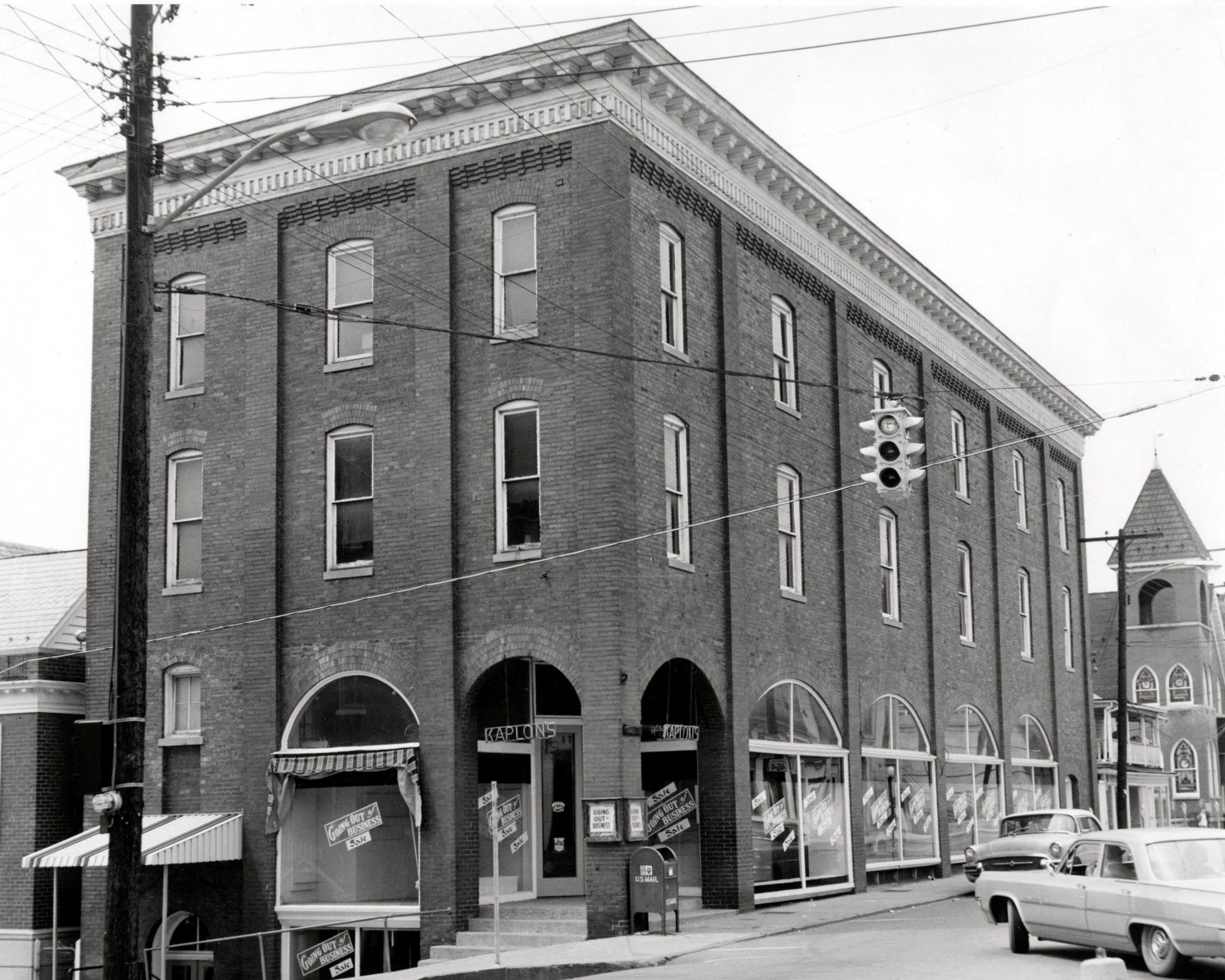
Kaplon’s Department Store, Brunswick (Courtesy of the Maryland Room, C. Burr Artz Library)

Sears and Roebuck Department Store, Frederick
Claire McCardell’s Influence on Ready Made Fashion
Claire McCardell became one of the most influential American fashion designers of the 20th century, in part because she emphasized comfort matched to style. Her story personifies the evolution of sewing from home to factory as well. McCardell’s approach – like women sewing at home by hand in service to their families – was realistic rather than artistic. But, she harnessed the efficiencies of the mass-produced, ready-to-wear industry in the 1940s and 1950s to manufacture easy-to-wear outfits that had style, and she met the demand from consumers after World War II who wanted affordable and comfortable clothes that nevertheless were appealing.
As McCardell described it, she pursued designs for clothes that were useful and comfortable. She ignored the mostly French styles that dominated fashion debate and design, and instead she created something entirely new. McCardell’s innovations include: metal fastenings, spaghetti straps and string ties, double rows of topstitching, long sashes, interchangeable separates, zippers on the sides, and – especially – pockets in women’s wear. Contemporary journalism from her era called her “revolutionary,” and much of what she brought to design became standard features that literally define the basic components of an item of clothing.
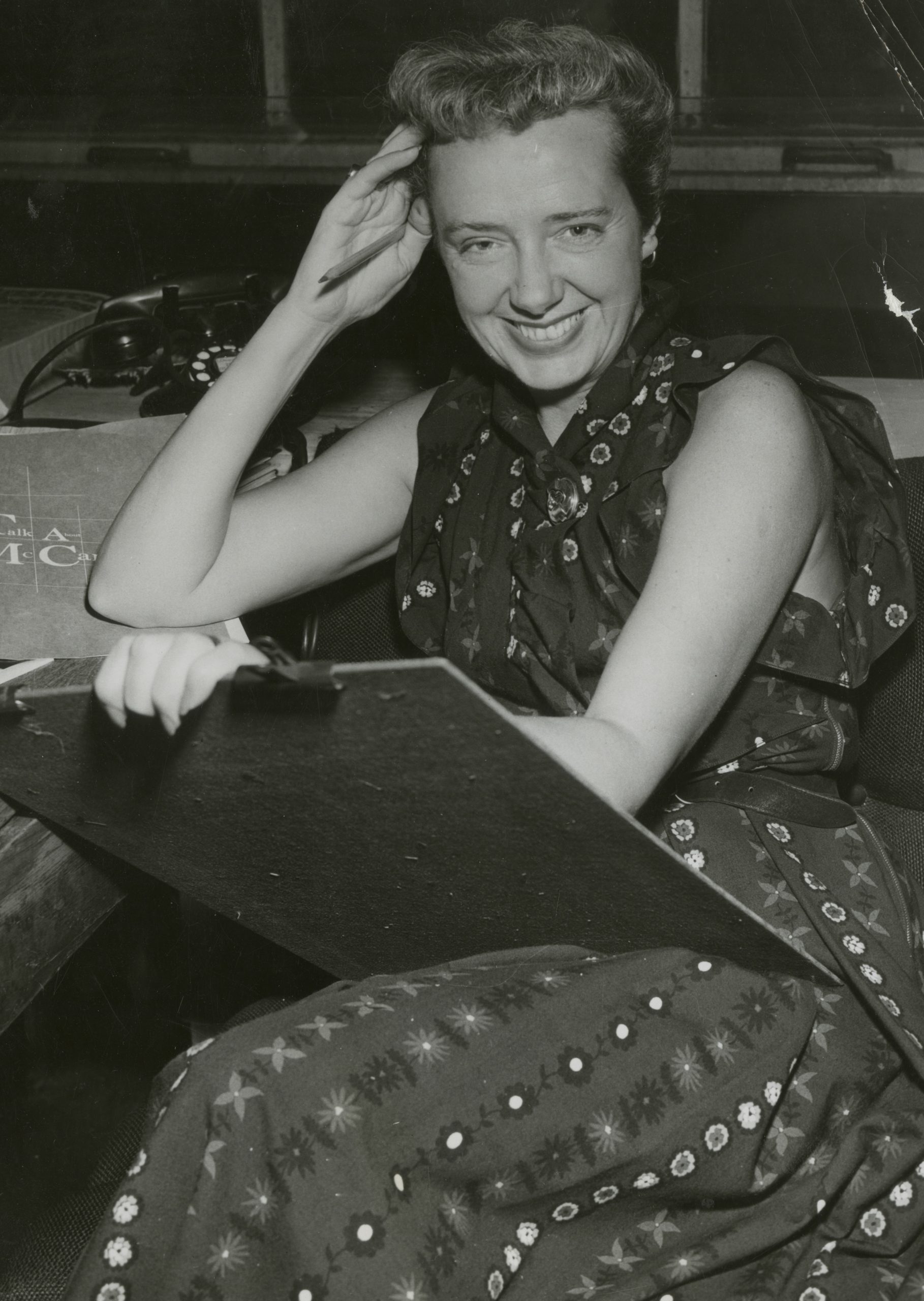
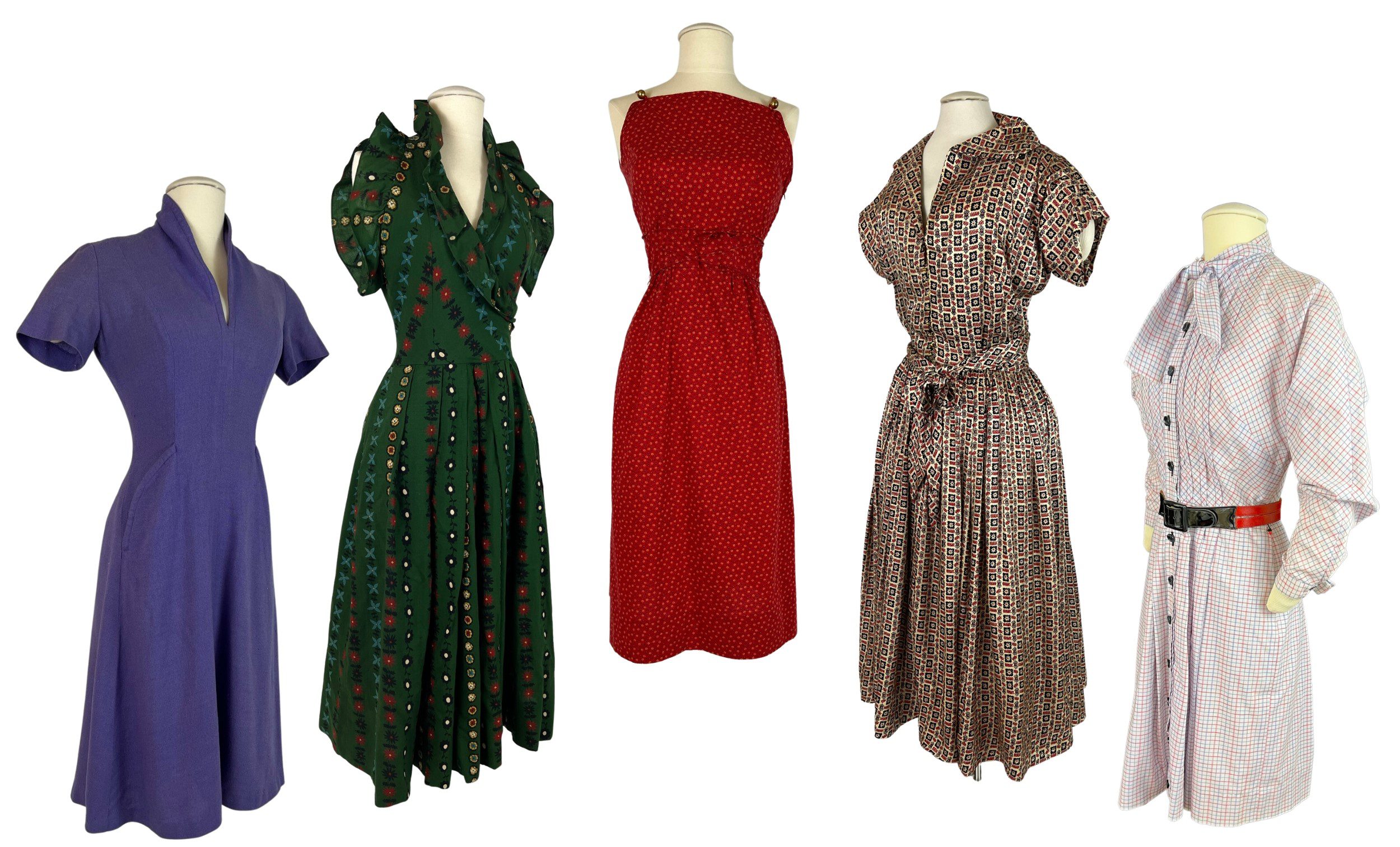
Claire McCardell was born May 24, 1905 in Frederick, MD. Her father was president of Frederick County National Bank and for a time, an elected state official; her mother was from Mississippi and met her future husband while visiting relatives in Frederick. Claire learned to sew at home with the family seamstress and began creating clothing as a young girl. She saved her mother’s fashion magazines for years and, late in her career, recalled cutting out paper dolls from the magazines as the beginning of her training in design.
McCardell graduated from Frederick High School in 1923 and wanted to move to New York and enter the fashion industry, but her father refused to support her. As a result, she stayed in Frederick and attended Hood College where she chose home economics as a major so she could take sewing classes. After two uninspiring years, Claire and her mother convinced her father to allow her to move to New York for a three-year program at what now is the Parsons School of Design. She wrote to a friend that she was determined to save the world from dreary clothes.
After graduating from Parsons in 1928, Claire’s first job in fashion was as a floor model in a prestigious department store. After a few short stints supporting designers, Claire became an assistant to Robert Turk, an independent designer, and two years later, when Townley Frocks absorbed Turk’s business, McCardell started her relationship with Townley, too. When Turk died a year later in an accident, Townley made Claire its chief designer at 27. Over the next 25 years, McCardell’s designs defined a new American fashion identity for women. In the fall of 1957, McCardell was diagnosed with cancer; she died on March 22, 1958.
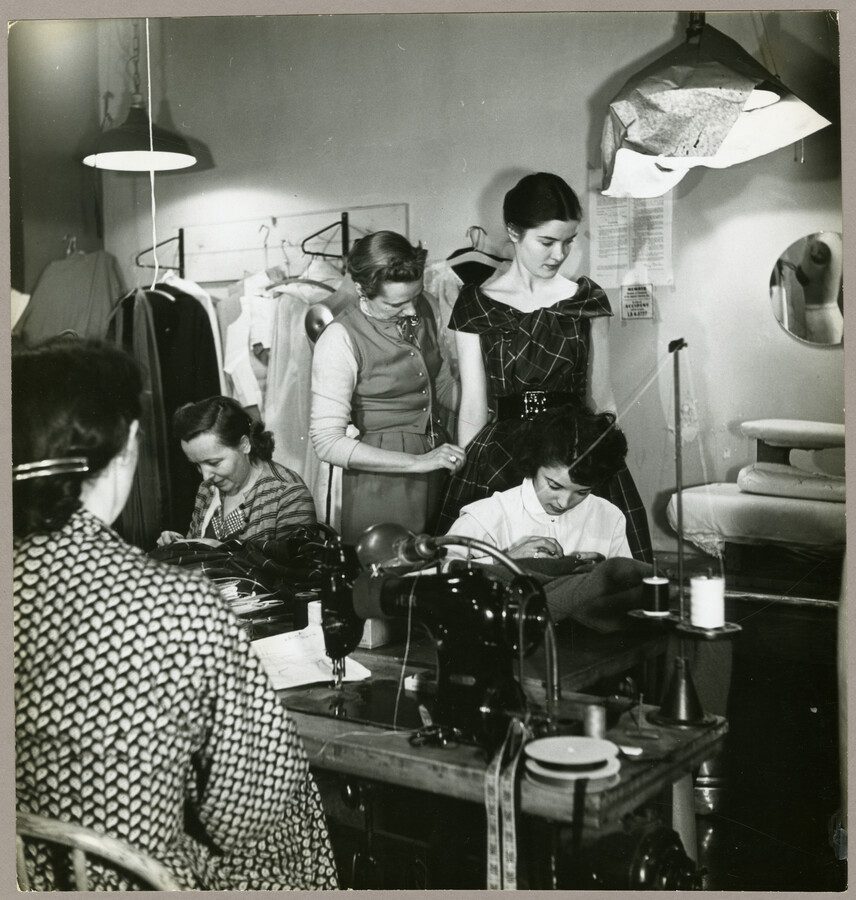
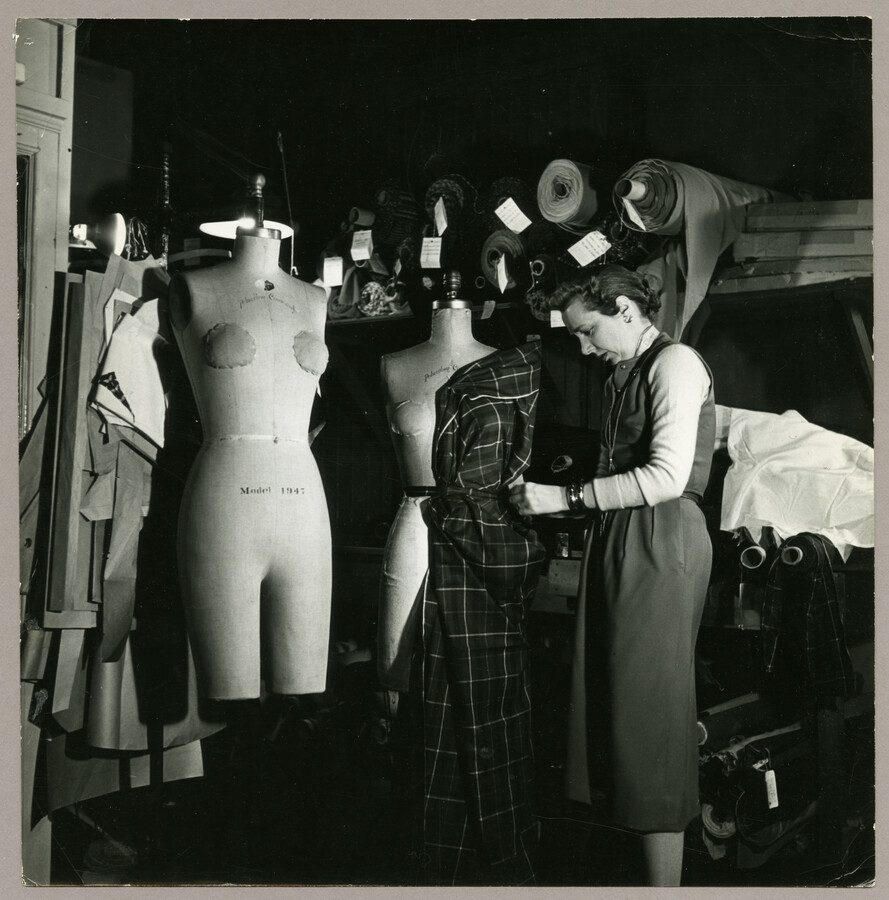
Claire McCardell at work in her New York studio. (Courtesy of the Maryland Center for History and Culture)
One Hundred and Twenty Years of Wedding Fashion

1823
Frances Russell Johnson to John McPherson
Donated by Alice Dibble
This is a Regency-style wedding dress worn by Frances “Fannie” Russell Johnson on December 23, 1823 as she married Col. John McPherson II. Fannie was the granddaughter of Thomas Johnson (1732-1819), the first governor of Maryland. Her father, Thomas Jennings Johnson, was the second richest man in Maryland at the time of the wedding. In her youth, she reportedly was widely admired and often attended functions at the White House during the administration of John Quincy Adams.
Col. John McPherson, Jr, served as a commander of the Frederick Dragoons. In 1817, his father built what today is called the Ross House at 105 Council Street and, following their wedding, Fannie and John lived in his father’s house for several years before moving to “Araby,” a brick mansion now referred to as the Thomas House, located on the Monocacy National Battlefield. The couple lived on East 2nd Street in Frederick when John died in March 1874. The Catoctin Clarion, earlier that year, published an article about the McPherson’s 50th wedding anniversary celebration during which Fannie supposedly wore her wedding dress and slippers for a second time.
While the Regency period in England lasted from 1811 to 1820 (the same era for all Jane Austen’s novels), Fannie’s Regency-style wedding dress would have been the absolute height of fashion and luxury in the United States at the time. Based on the classical form of the flowing Grecian robe, the creme silk wedding dress features an empire waist, short puffed sleeves, and intricate individually-crafted leaf appliques surrounded by fringes of silk tulle.
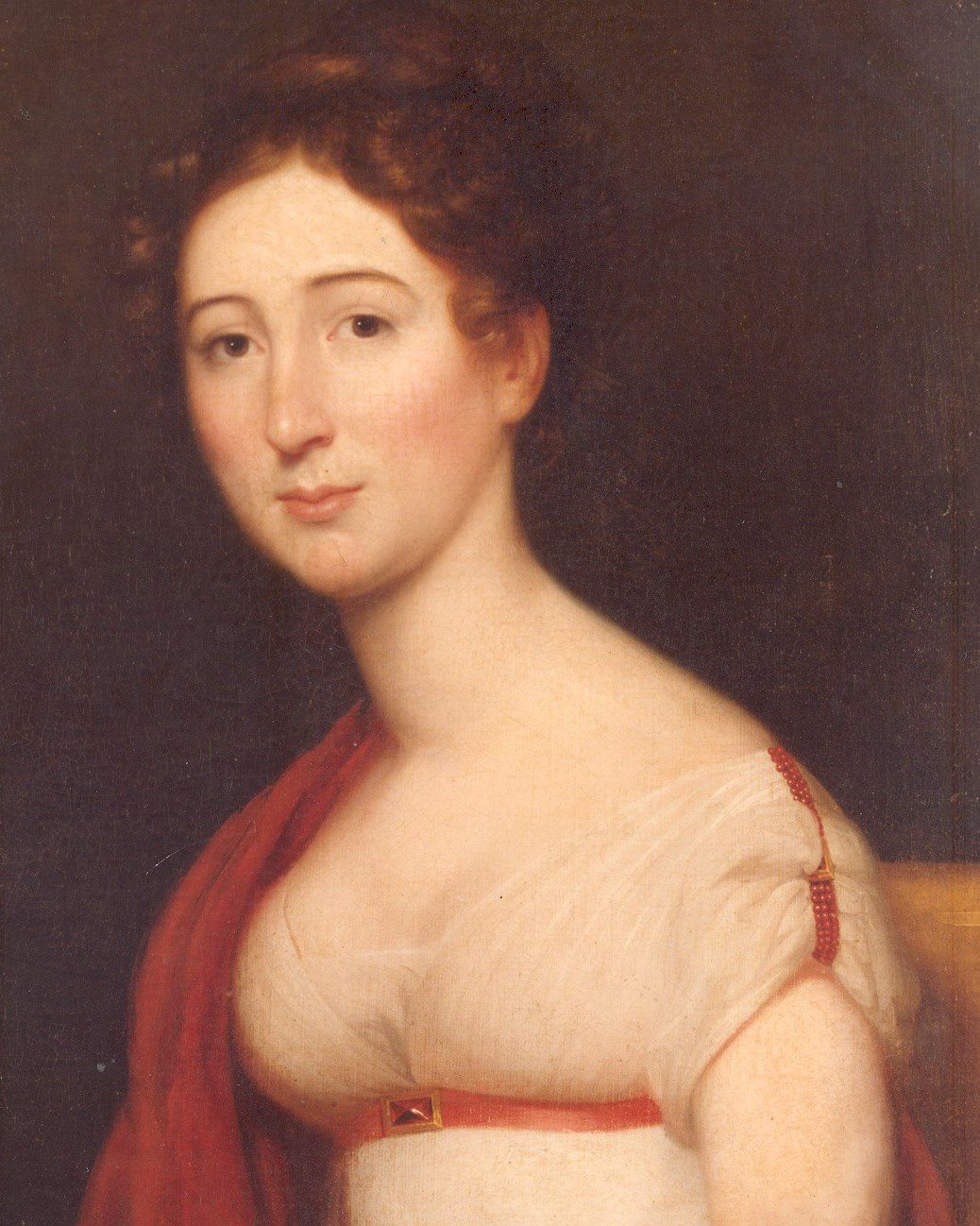

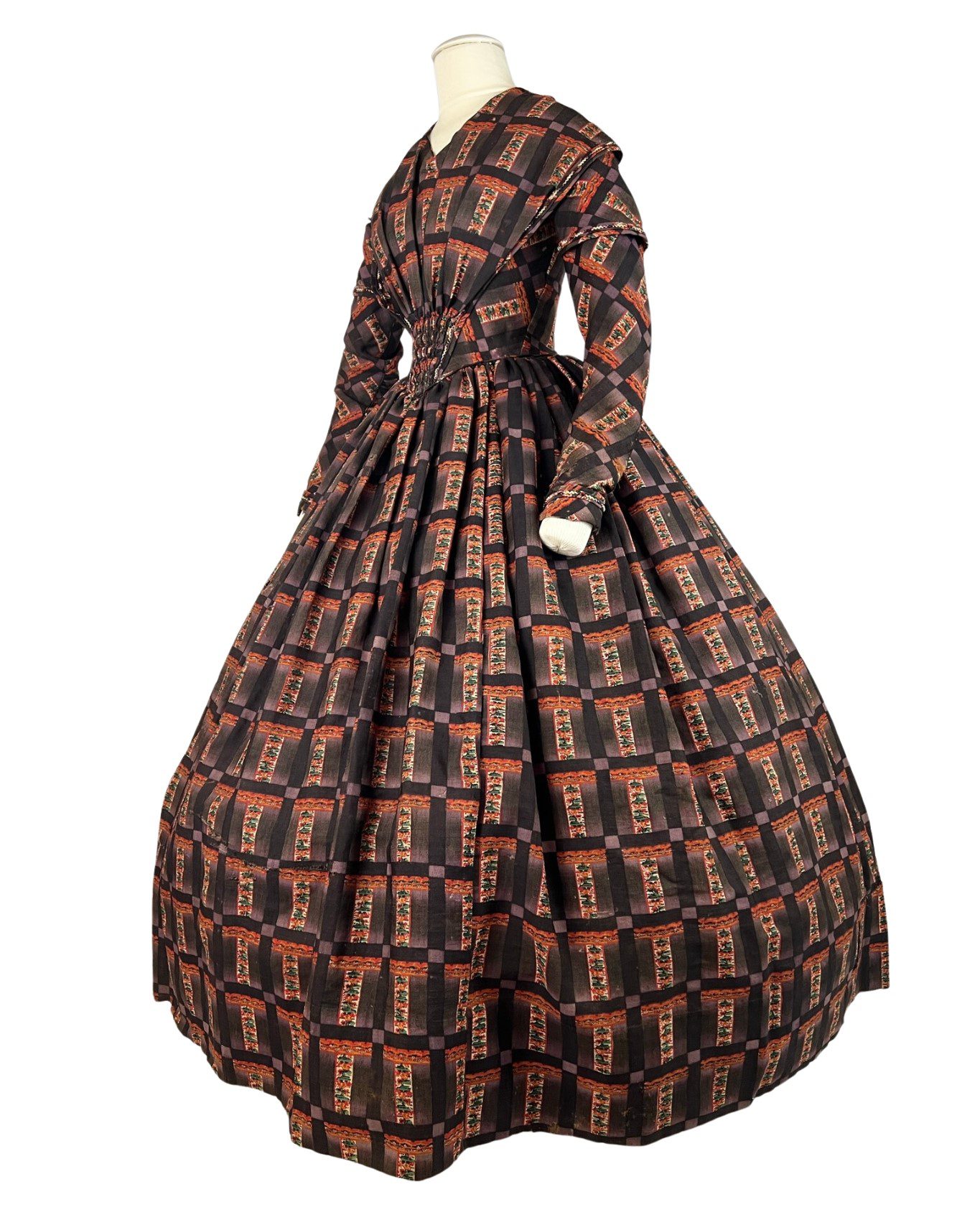
1847
Mary Jane Haines & Abraham Cassell
Donated by Mr. and Mrs. John Magness
Mary Jane Haines, daughter of Isaac and Mary Haines, was born in 1827 in Wakefield Valley, which at the time was in Frederick County. Isaac, a farmer, had been a member of the Pipe Creek Meeting of Quakers until his marriage to a non-Quaker. At the age of 19, Mary Jane married 28-year-old Abraham Cassell, a merchant also from Wakefield, on March 22, 1847. Unfortunately, their life together was short and filled with tragedy. The couple lost their first child, Emma, in 1848 when she was just five months old. The following year they welcomed a son, Charles E. Cassell, but when he was just one year, one month, and one day old, Mary Jane died at the age of 23. Abraham never remarried and died 12 years later in 1862; his gravestone in the Cassell Cemetery in Westminster reads, “His life was one of extreme suffering from Asthma.” Charles, educated at Dickinson College in Carlisle, PA, worked in real estate before becoming interested in printing. For 23 years he was proprietor and editor of the Catoctin Clarion, a newspaper that served the town now called Thurmont, MD and the surrounding area.
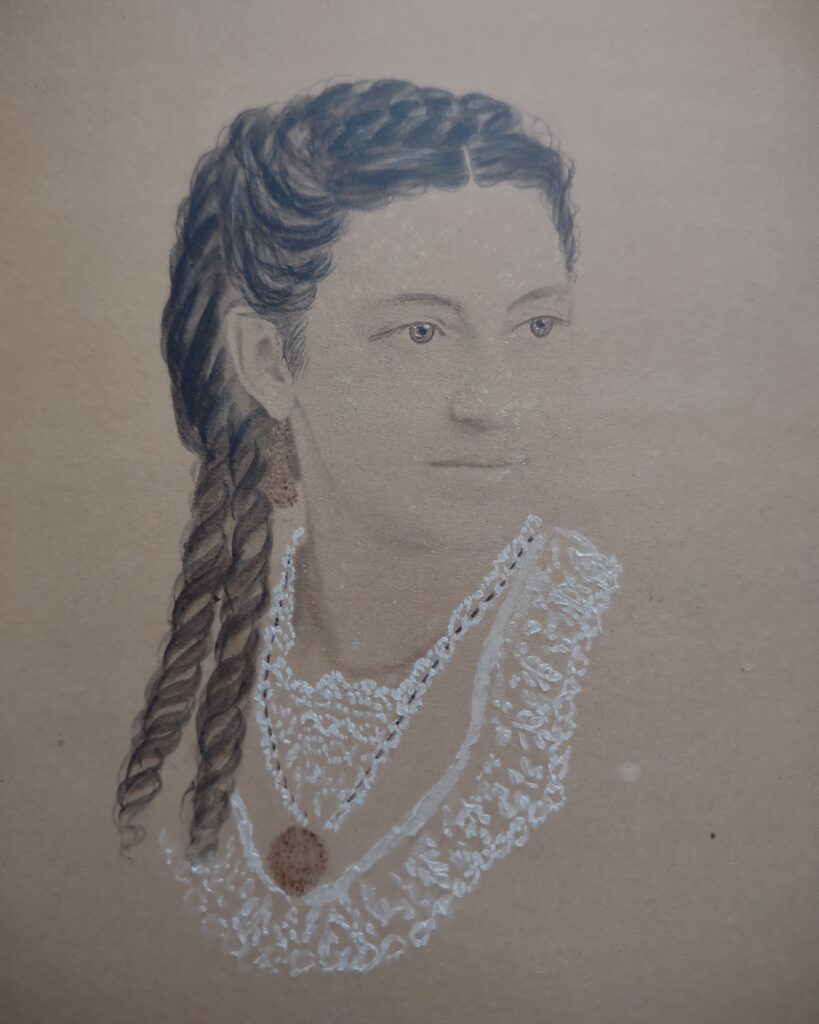
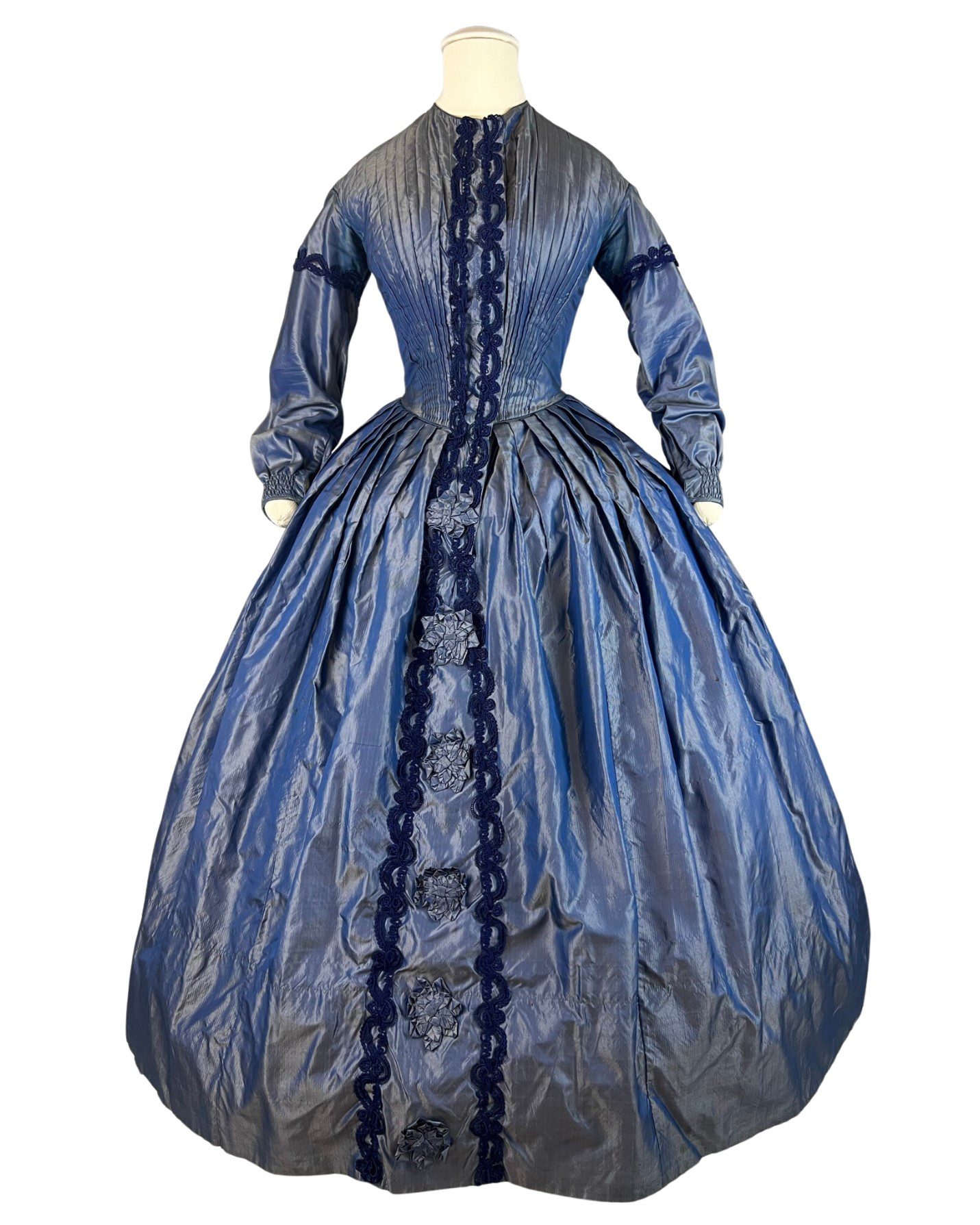
1849
Mary Ann Harmon & Daniel Josiah Snook
Donated by Mary Seibert
Mary Ann Harmon, born in 1828, married Daniel Josiah Snook on November 23, 1849. Josiah was the son of Daniel and Anna Margaret Hill Snook and grew up on the family farmstead near Utica. The Snook family, originally from Germany, arrived in America in the first quarter of the 18th century. Simon Snook first purchased land in the Utica area in 1777 near where his grandson Daniel, Josiah’s father established the farm and in 1840 built a Maryland Piedmont Style farmhouse. This three-hundred acre tract of land was one of the largest in the Utica/Lewistown area and was well equipped for farming, with various storehouses and a barn in addition to the impressive brick house. Josiah was educated in the local public schools and followed his father into agriculture. Like his father, he was a loyal and respected member of the Utica Reformed Church. Following his father’s death, Josiah purchased the family farm where he and Mary Ann raised their three sons. The family grew crops, had a dairy herd and bred livestock. The Snook family was well-known in the community for their hospitality and the first of the Utica Annual Picnics were held on their property. The Snook homestead and farm still exists today, adjacent to Utica Park. Several historical markers about the Snook family and property are located in the park as well as a walking trail that meanders past the original farmhouse, bank barn, springhouse, smokehouse, woodshop, dairy parlor and milk house. Mary Ann’s beautiful blue, watered silk, wedding gown was given to Heritage Frederick in 1991 by Mary Pitzer Seibert, Mary Ann and Josiah Snook’s great granddaughter.



1866
Sarah Spencer Smyth & Dr. Lewis Henry Steiner
Donated by Richard L. Steiner
Sarah Smyth was born in Guilford, CT in 1838, the daughter of Ralph Dunning Smyth, a well-known lawyer and judge, and his wife, Rachel Stone Seward. The family lived just steps away from the First Congressional Church where Sarah married Dr. Lewis Steiner on October 30, 1866.
Lewis was born in Frederick City in 1827, the son of Christian Steiner, a merchant, and his wife, Rebecca Weltzheimer. He attended Marshall College in Mercersburg, PA followed by medical school at the University of Pennsylvania. During the Civil War, Lewis served as Chief Inspector of the US Sanitary Commission in the Army of the Potomac. In later years, voters elected Lewis to two terms as a state senator in Maryland, and he finished his career as the first librarian of the Enoch Pratt Library in Baltimore.
Lewis and Sarah were the parents of six children whom they raised in Frederick. Lewis died in 1892 at the age of 64 in the couple’s Eutaw Street Baltimore home where they had been living since Lewis began his position at Pratt in 1884. Sarah also died in the home, from pneumonia, in 1914.
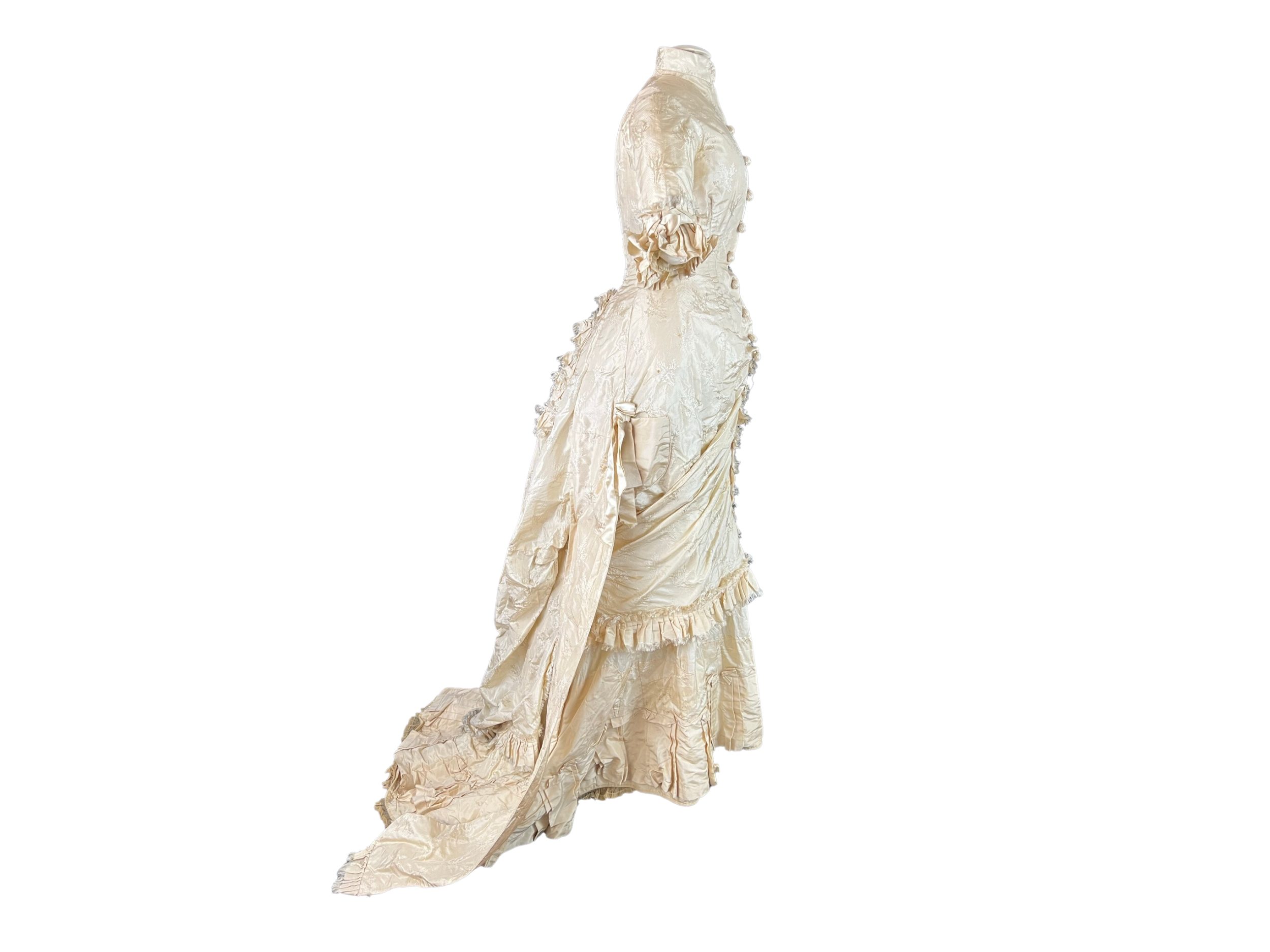
1879
Charlotte Patterson Dennis & Dr. Franklin Buchanan Smith
Donated by Miss Charlotte P. Smith
Charlotte Dennis, the second daughter of Col. George Robert and Alice Johnson McPherson Dennis, was born in Frederick in 1855 and christened at All Saints’ Episcopal. She was the great-great granddaughter of Governor Thomas Johnson.
Charlotte married Dr. Franklin Smith on October 30, 1879. Franklin was born in 1856 to George and Mary Nixdorff Smith. He attended Frederick College then earned his medical degree from Princeton University. He became one of the best known physicians in Western Maryland as well as one of Frederick’s most prominent citizens during his lifetime.
Tragically, Charlotte died of consumption in 1889 at the age of 33. Her obituary described her as “a lady highly esteemed for her amiable traits of character. One who was popular among her associates, and who in every respect was a faithful and loving wife and mother.” Franklin lived another 23 years, marrying Charlotte’s half-sister Anne Grahame Dennis in 1892. He passed away at age 57 of typhoid.
Charlotte’s grandmother, Frances Russell Johnson McPherson, wore the dress from 1823 also on view in this exhibit.
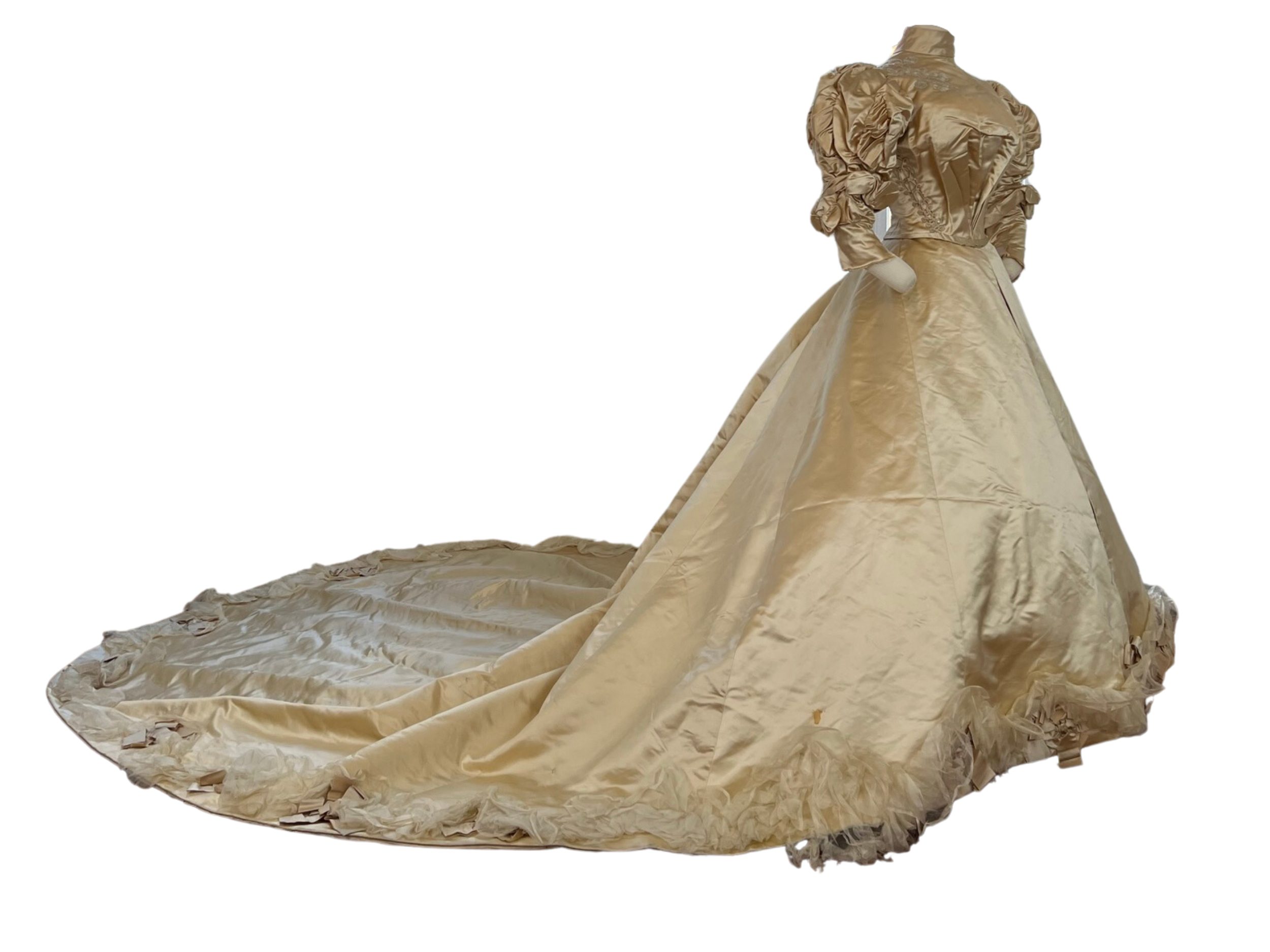
1894
Theresa Kunkel & Charles Worthington Ross, Jr.
Donated by William Myers
Theresa Kunkel was the daughter of John Jacob and Mary Elizabeth MacGill Kunkel. John Jacob’s 1888 obituary claimed a fortune close to $300,000 – about $9 million today and a considerable sum then. Theresa’s mother also came from a prominent Frederick family. On April 11, 1894, at age 21, she married Charles Worthington Ross, Jr., another well-connected, native Fredericktonian.
The wedding ceremony took place in Baltimore where Theresa’s family had been residing following the death of her father. Theresa literally “stopped traffic” in her wedding gown, because her home sat directly across the street from Grace Protestant Episcopal Church. The city’s leaders closed Memorial Street and the family stretched an awning across the road so the bride could make her way to the 6:30 PM ceremony.
The satin gown features a high neckline and mandarin collar, a smooth satin bodice decorated with an asymmetrical, beaded floral design, and elbow-length, puffed sleeves. The skirt is decorated at the hem with tulle garland and satin bows and boasts a six-foot, cathedral train. According to the wedding announcement, her veil was held in place with diamond ornaments, and she carried a shower bouquet of lilies of the valley.

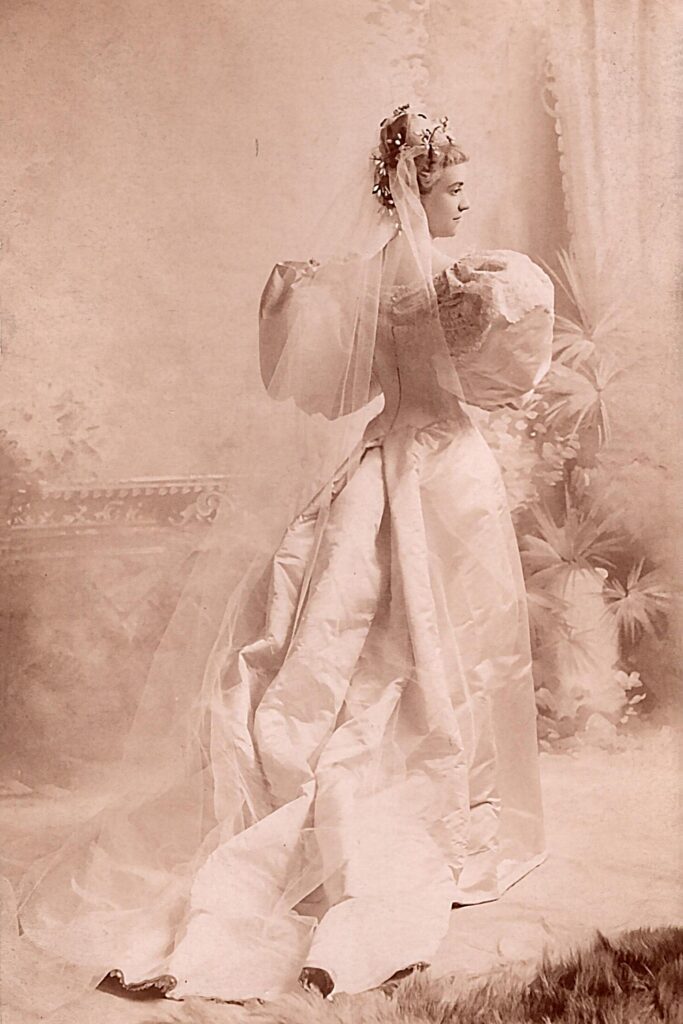
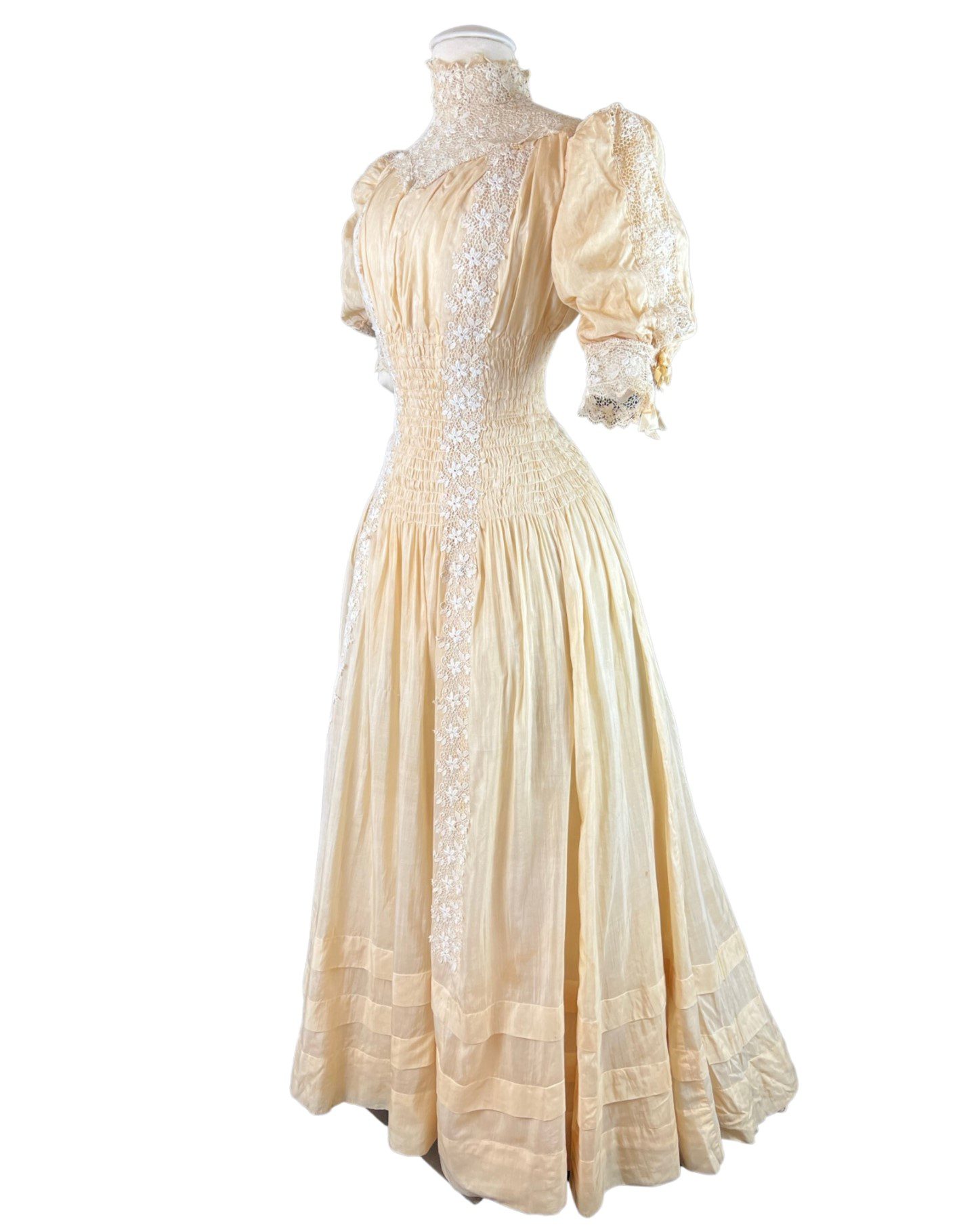
1901
Alice Eleanor Griffith Wood & Howard Hanford Hopkins III
Donated by Howard Hanford Hopkins IV
Alice Eleanor Griffith Wood wore this linen and lace gown for her wedding to Howard Hanford Hopkins III. Alice grew up in New Market, the daughter of Ira Newton and Annie Griffith Wood. Her father, a farmer, died in 1881 at age 31, leaving Annie with their four children, ages 9, 6, 4 and 2. Annie married for a second time in 1887, to her first husband’s older brother, Melvin Pickney Wood. Melvin had owned and operated a store in Monrovia where he was postmaster for a time and was elected to the Maryland House of Delegates in 1885, 1893, and 1895.
Alice’s father-in-law, Dr. Howard Hanford Hopkins, Jr., was a well-known local physician. Her husband followed in his father’s footsteps and became a practicing physician in New Market as well, while his two brothers, also doctors, set up practices in Mount Airy and Bel Air. Alice and Howard were married at the Protestant Episcopal Church in New Market on April 17, 1901. They had two sons, both of whom lived in Baltimore County. Howard H Hopkins IV became a doctor and Richard worked as a banker and water company executive. Alice and Howard both passed away rather young, Howard in 1918 at age 43 and Alice in 1921 at age 44.

1927
Alice C. Witter & Daniel J Thomas
Donated by Sarah Thomas Drenning
Alice Catharine Witter grew up on a 40-acre farm near the Frederick fairgrounds. Her father, Harry Baker Witter, was born in Freeport, IL in 1866 but eventually moved to Frederick County where he married Mary Catherine Virginia Miller in 1888. Harry worked as a farmer and became an official for the Great Frederick Fair.
Alice grew up as the sixth of nine children born to Harry and Mary. On October 25, 1927, Alice married a fellow Frederick Count native, Daniel Josiah Thomas. Together, Alice and Daniel continued her family’s farming tradition working as tenant farmers on a property west of Fredericktown. The couple had two children, Sarah and Barbara Thomas. After 44 years of marriage, Daniel died in 1972 at the age of 78. Alice died in 1984 in Quincy, PA; she was 83.

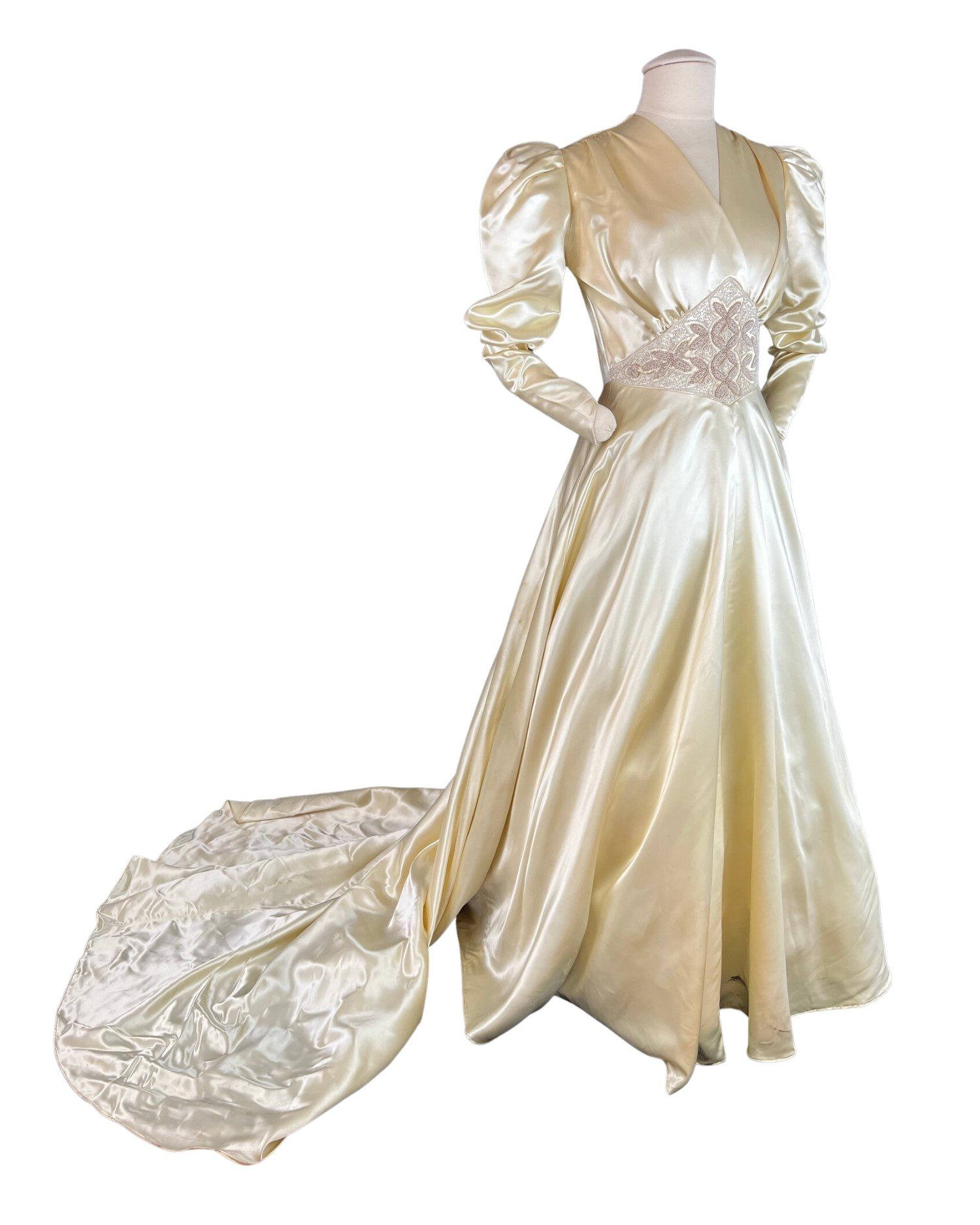
1940
Eleanor Lucretia Thomas & Walter Luther Bussard
Donated by Eleanor Thomas Bussard
Eleanor Lucretia Thomas was born on December 3, 1915 in Harmony Grove, a tiny hamlet once located on the northern edge of Frederick City along Wormans Mill Road. Eleanor grew up on the family farm as one of four children to Frank and Effie Hargett Thomas. She graduated from Hood College and at the age of 25 married Walter Luther Bussard, from Jefferson, on February 17, 1940 at the Evangelical Reformed Church in Frederick. According to the wedding announcement, “Miss Thomas was given in marriage by her father. She wore a gown of white satin made with a train, beaded girdle and long sleeves ending in points over the hand. Her tulle veil caught at the temples with orange blossoms, fell to fingertip length from a coronet.” The couple lived in Washington DC, where Walter worked as a salesman at Triangle Motors, a Ford dealership. Eleanor taught home economics in Baltimore City and, later in life, taught nursery school in Montgomery County. Eleanor and Walter raised two sons, David and Wayne. Walter died in March 1983 at the age of 69. Eleanor lived for nearly three more decades, dying in 2011 at the age of 96.

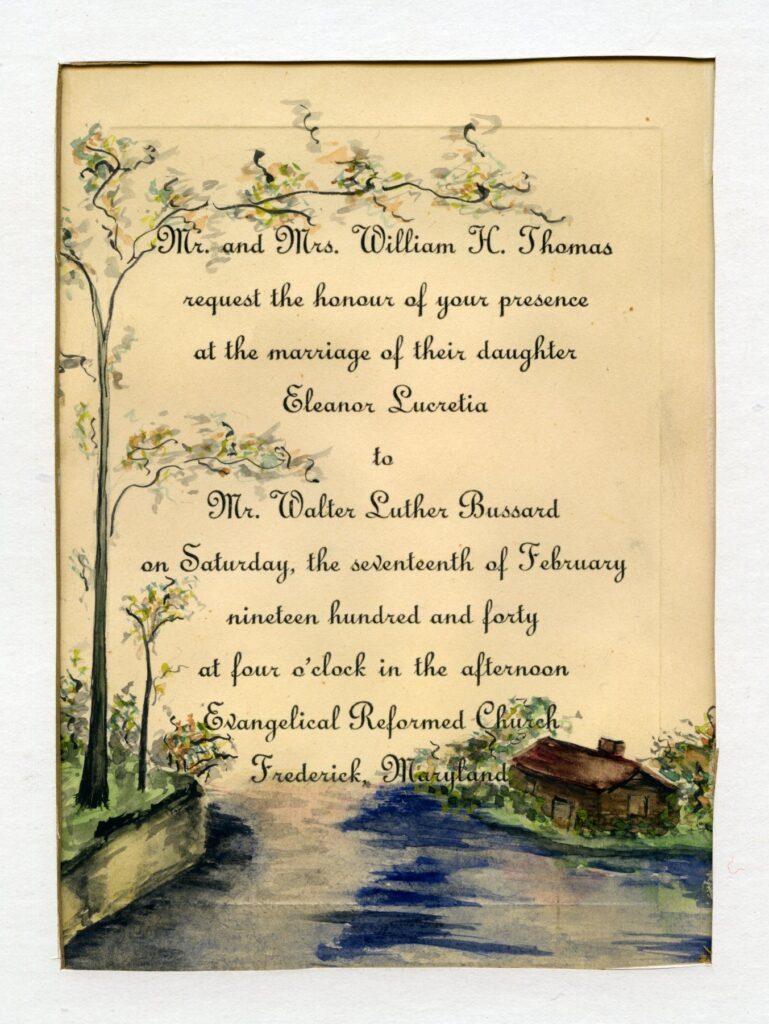
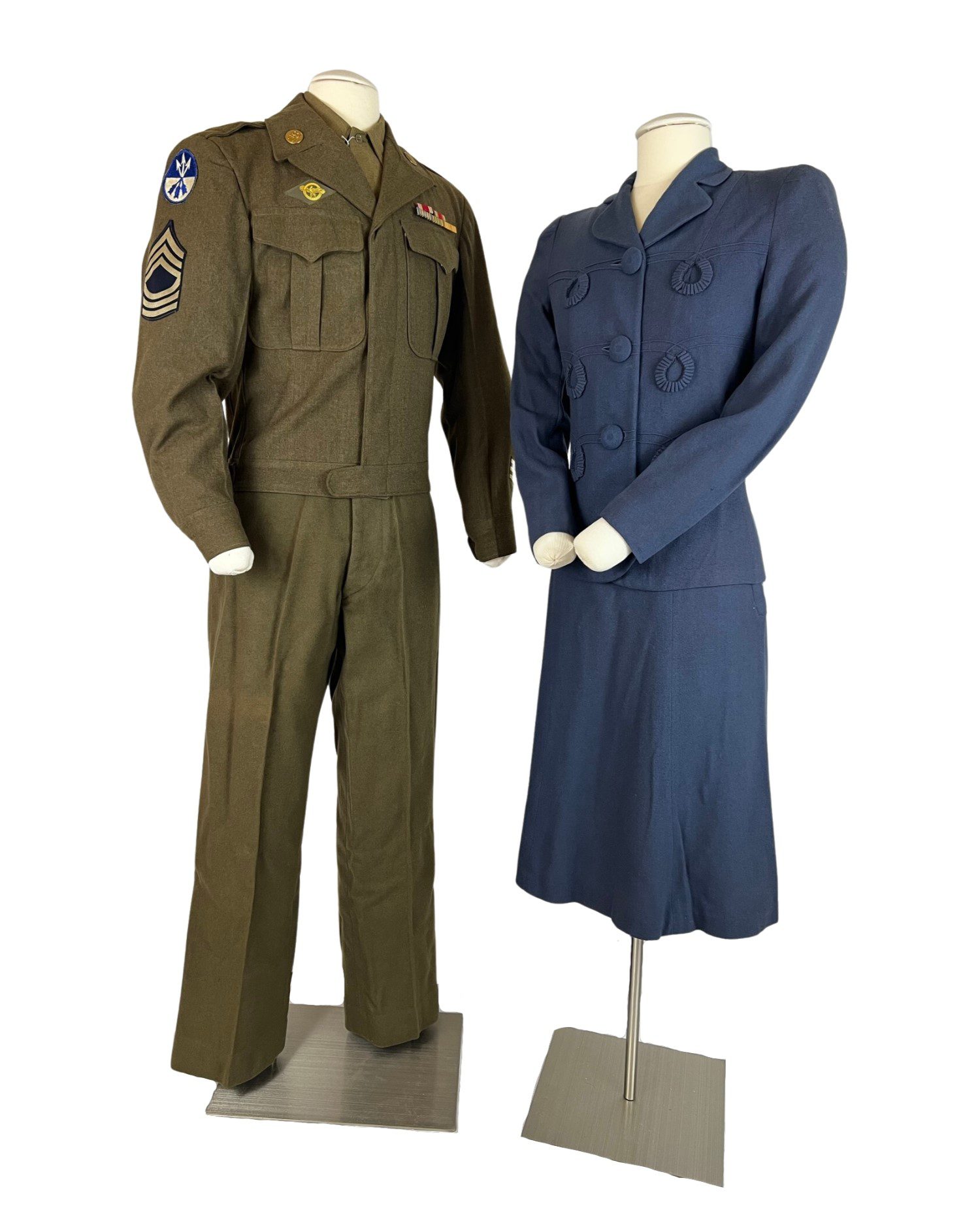
1943
Helen Smith Brown & William Meredith Smith Young
Donated by Laura Pino
These are the wedding clothes worn by W. Meredith S. Young and Helen Smith Brown. Meredith was born in Frederick on May 16, 1913, the second of four children for John Henry and Jessie Beall Young. John was an electrician and the family lived on South Market Street. Meredith graduated from Frederick High School and then went to work for the Fredericktown Bank and Trust. Helen Smith Brown was born in Doubs on June 4, 1913. She grew up on the family farm as the only child of Osbie and Ada Smith Brown. Like Meredith, she also attended Frederick High then Hood College, where she graduated in 1935. Helen also found employment with Fredericktown Bank and Trust.
On April 6, 1943, Meredith enlisted in the US Army. He graduated from Army Finance School at Fort Benjamin Harrison in Indiana and served as master sergeant in the 146th Finance Disbursing Section in both Europe and Japan. Before being deployed, Meredith married Helen at Doubs Lutheran Church on October 12, 1943. He wore his US Army uniform and she wore a two-piece, blue dress-suit ensemble.
Following his wartime service, Meredith returned to Frederick in 1946 and rejoined the bank; both Meredith and Helen spent their careers with Fredericktown Bank and Trust. Meredith ultimately spent many years as the bank’s president and after his retirement, another seven years as chairman of the board. Helen retired in 1978 as vice president and trust officer. The couple were very engaged civically and dedicated to the Frederick community and to their church, Evangelical Lutheran. They did not have children but were very close with their six godchildren. Meredith and Helen both passed away in their Frederick home on Schley Avenue just four months apart in 2009.

